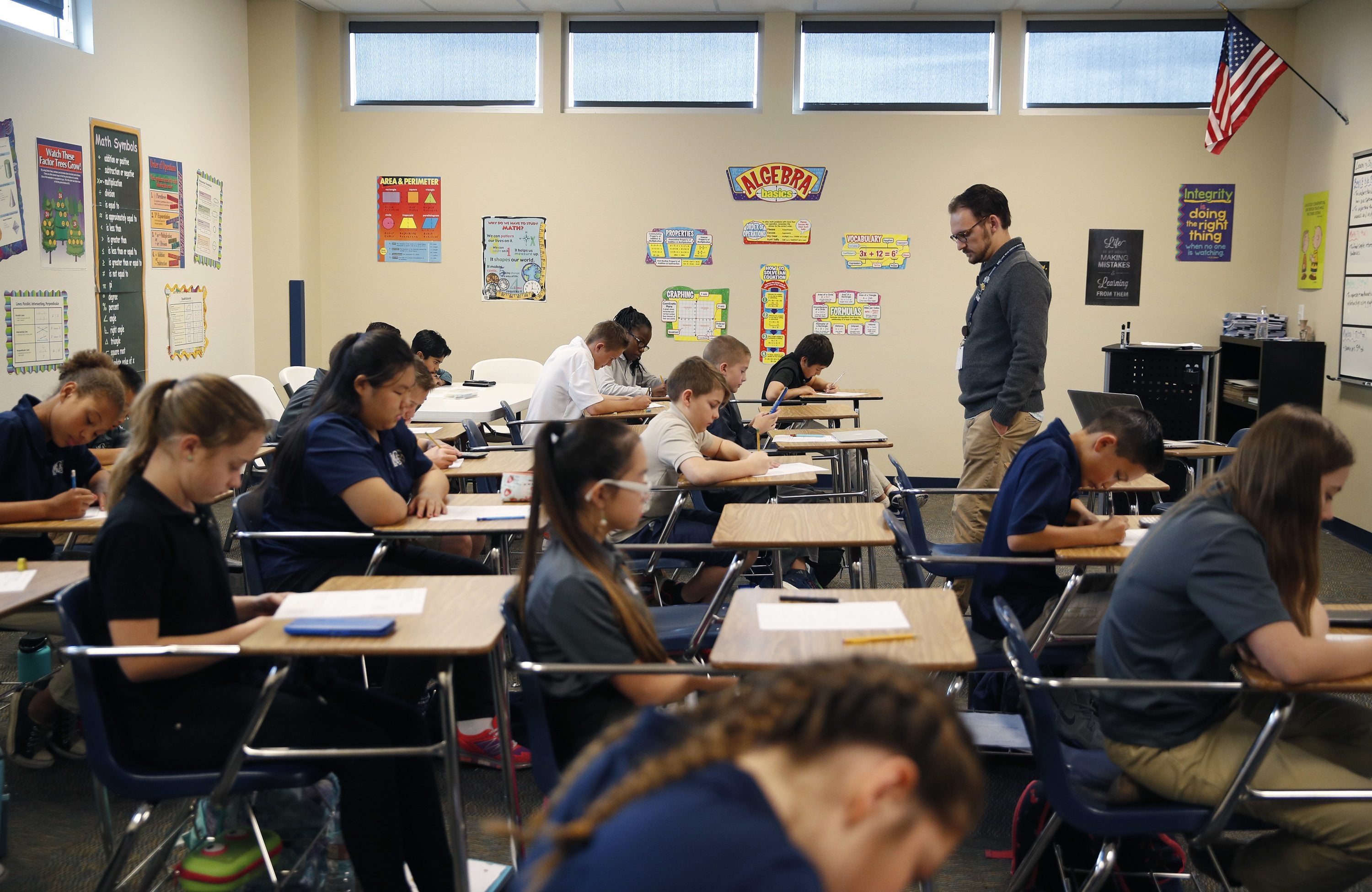Will this tweak in Pa. law send student test scores soaring?
The standardized tests scores of chronically absent students will no longer count against teachers, schools, and the state.

The standardized tests scores of chronically absent students will no longer count against teachers, schools, and the state. (John Locher/AP Photo)
Student test scores in Pennsylvania could spike next year — and a 90-word provision recently tucked into the state’s school code may be the reason why.
The language states that Pennsylvania will no longer count the standardized test scores of students who miss at least 20% of school days prior to the end of the state testing window.
That effectively means scores from PSSA and Keystone Exams from chronically truant students won’t be used to evaluate teachers, hold schools accountable, or rate Pennsylvania’s overall performance on federal reports.
Chronically absent students tend to perform worse on standardized tests, so if Pennsylvania strikes those students from the testing sample it could lead to higher scores.
But that’s not the purpose of the legislation, said Mike Straub, spokesperson for state House Republicans. Rather, he said the new language is a matter of fairness.
“The intent is straightforward,” Straub said. “Teachers cannot educate a student who is not participating in the process. So those students’ scores should not be a reflection on the teacher.”
There’s also a debate over what effect this law will have.
A spokesperson for the Pennsylvania Department of Education said the legislation would not impact PSSA pass rates because it wasn’t in compliance with federal law. The spokesperson did not give specifics.
Straub said state leaders are confident the new rule does comply with federal regulations.
Jennifer Kocher, a Pa. Senate GOP spokesperson, said the explicit purpose of the bill was “to allow the schools to have a better picture of the test scores for the kids they have had the opportunity to instruct for an entire year.”
Kocher said the new language would indeed change the way the state calculates “overall school performance metrics.”
Because the language was inserted as part of the house’s omnibus school code bill it’s unclear who stumped for its inclusion. Straub could not say if a particular lawmaker in the House GOP caucus pushed for the bill. A spokesperson for the Democratic House leader said the language did not originate from their party. And inquiries to the heads of each party in the State Senate turned up non-responses on the language’s origins.
It’s also tough to estimate what this change will do to state test scores, and the Pennsylvania Department of Education was not able to say how many students missed 20% of school days last year.
There could be an overlap between the set of students who are habitually absent and the set who do not show up for standardized tests. In that case, there would be fewer scores to discount because the students are already not taking tests.
But there’s a caveat within that caveat.
At schools where more than five percent of test-eligible students fail to take the test, all subsequent absent students are counted as zeroes for reporting purposes. That means for schools with high absenteeism and low test-taking rates, this change could convert some “zeroes” into non-scores. And that change would push averages higher.
Even if there’s not a macro-level change to state test scores following this policy shift, individual schools could see significant spikes.
The state does tabulate how many students at each school have “regular” attendance. In order to qualify for this threshold, a student must attend school 90% of the time — a higher bar than the 80% threshold established by the new state rule.
That said, there are several Pennsylvania schools where a significant number of students don’t attend school 90% of the time.
A Keystone Crossroads analysis found 70 Pennsylvania schools where at least half of the students did not attend school regularly. Thirty-one of those 70 schools are in the School District of Philadelphia, the state’s largest school district.
Of the remaining 39 schools, 13 are charter schools and two are cyber charter schools.
WHYY is your source for fact-based, in-depth journalism and information. As a nonprofit organization, we rely on financial support from readers like you. Please give today.





